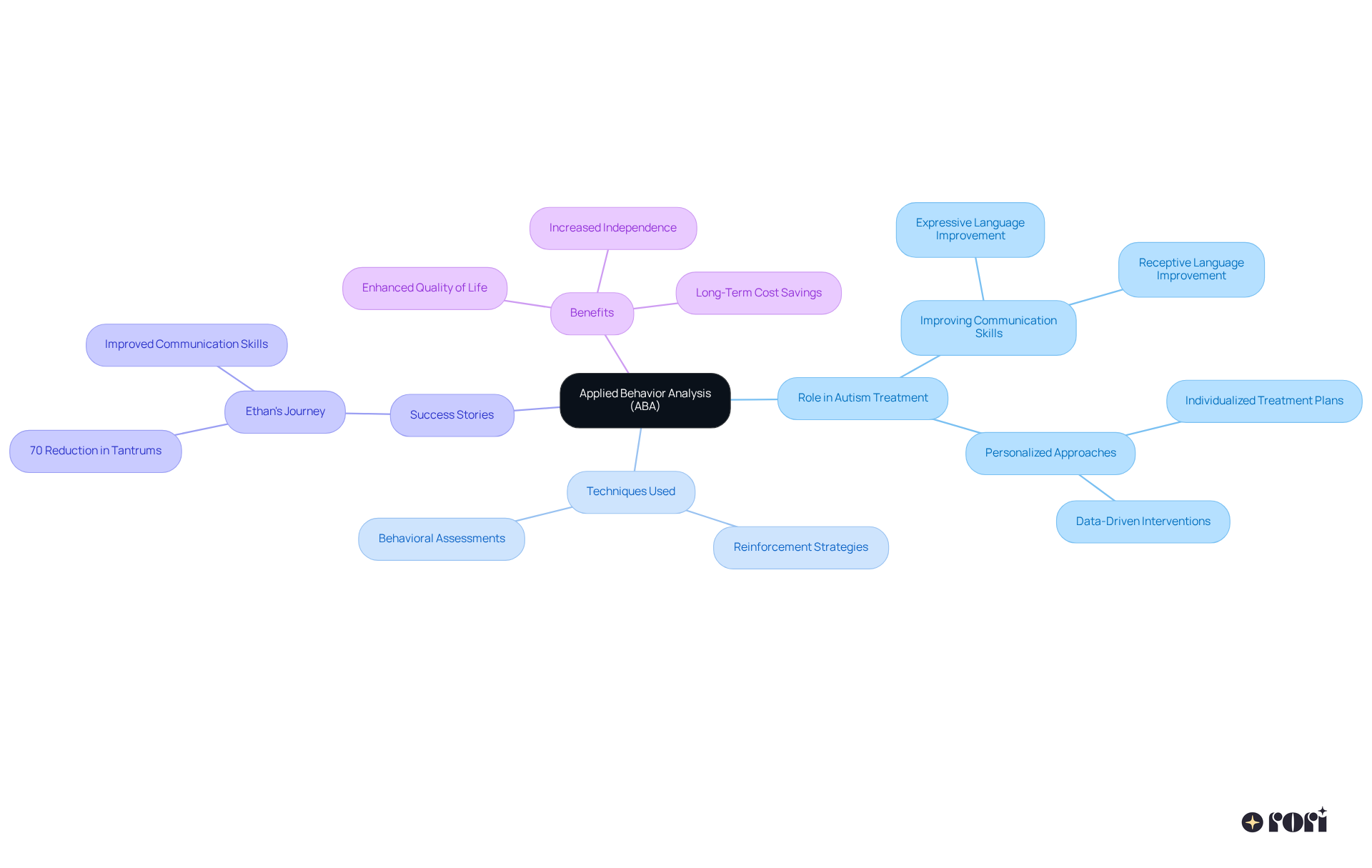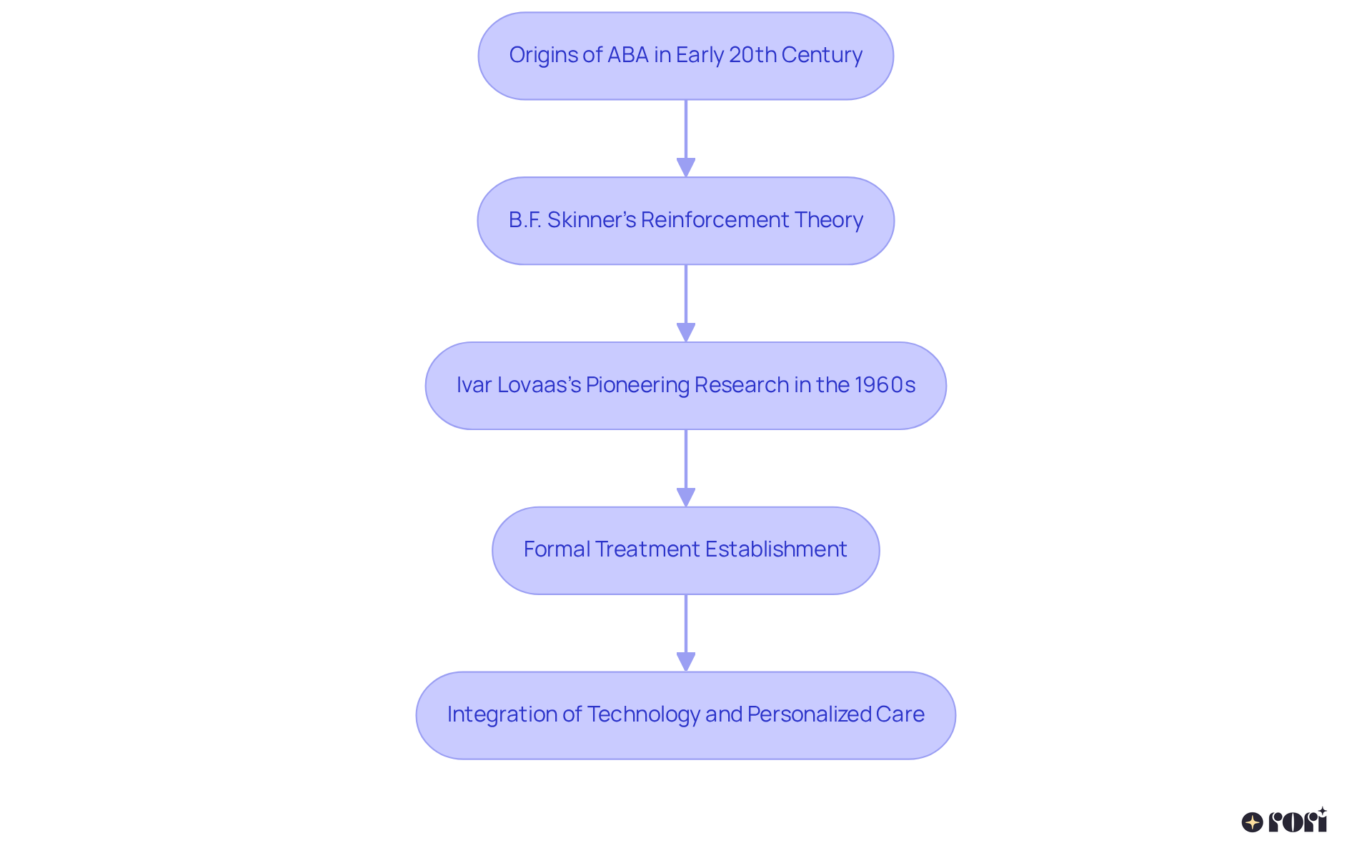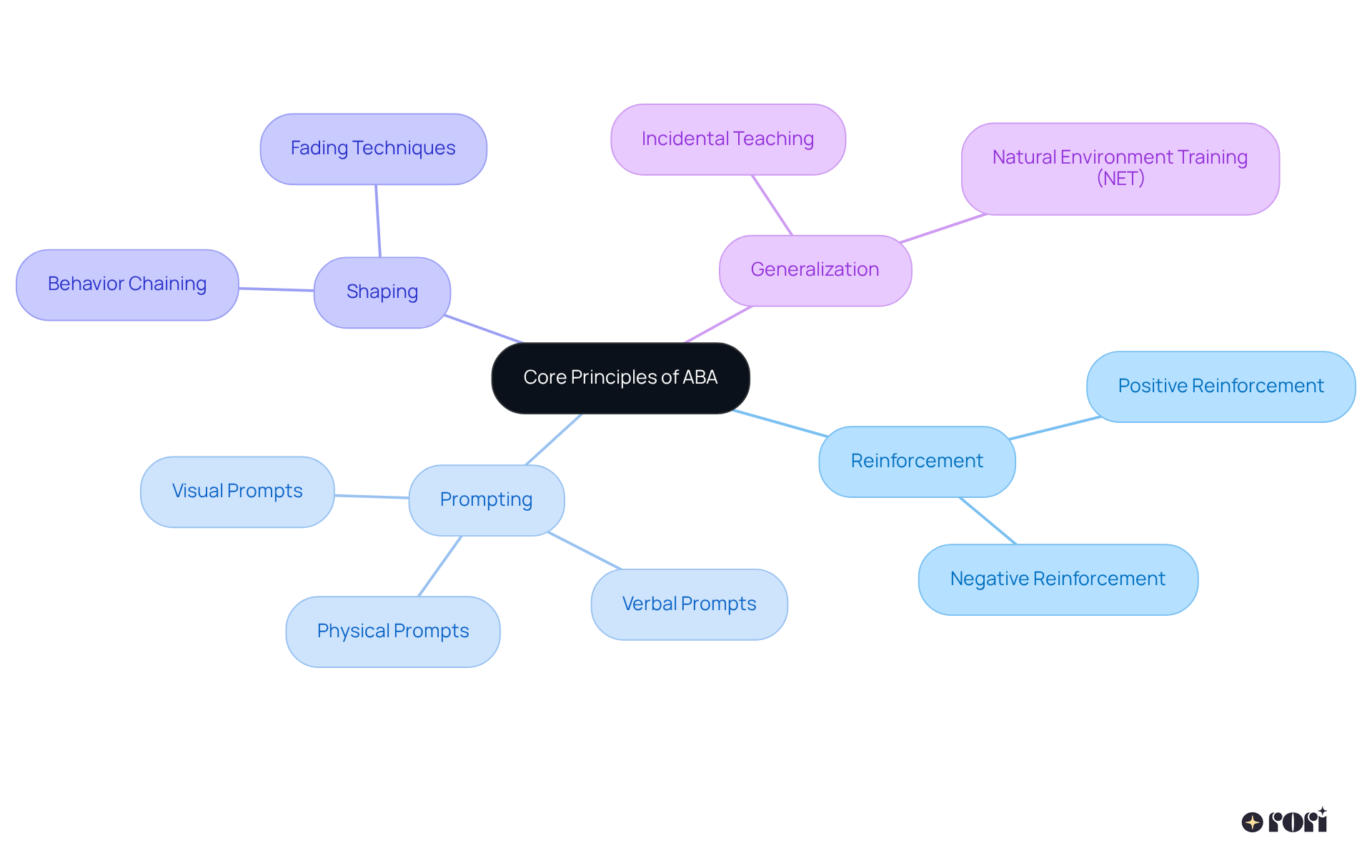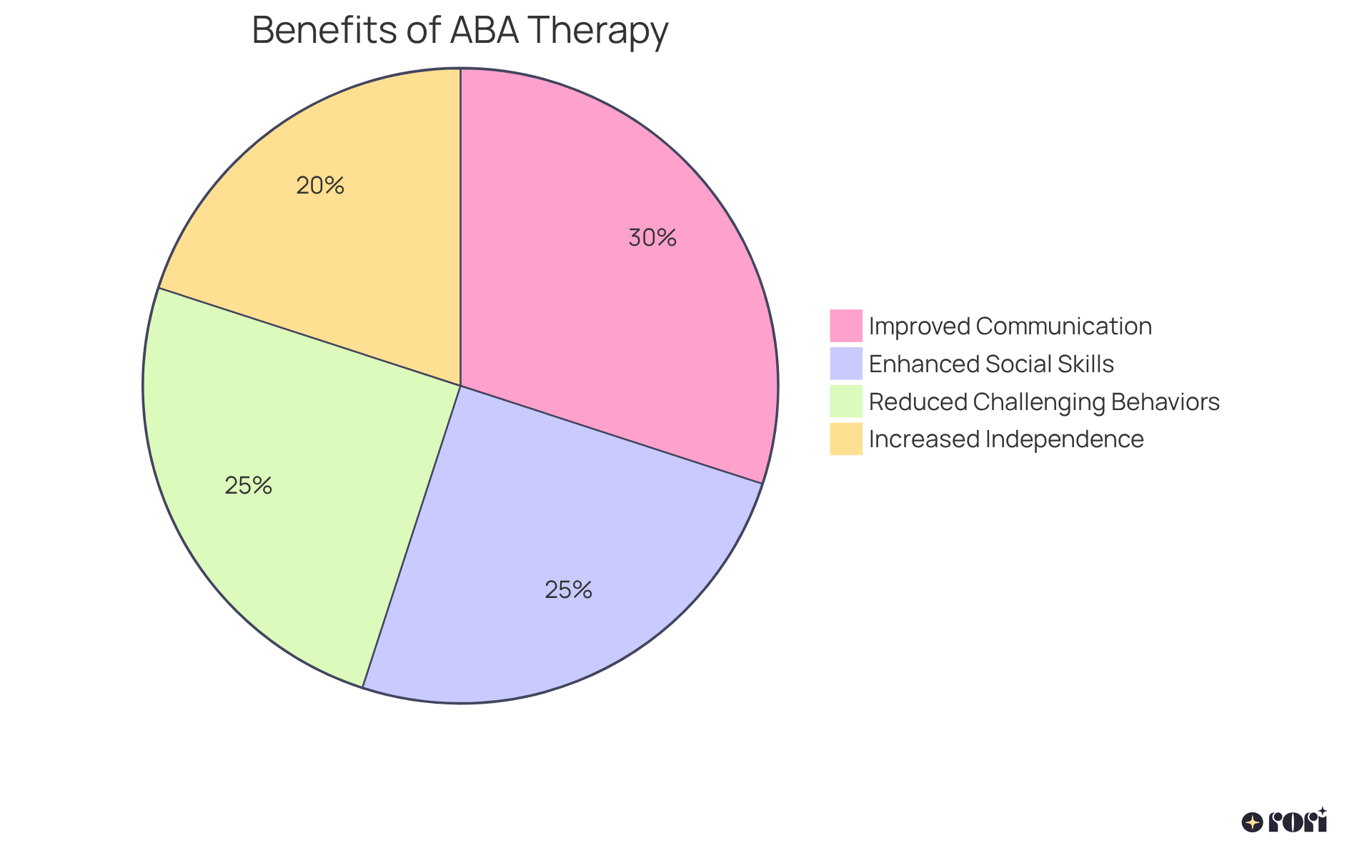Applied Behavior Analysis (ABA) is a game changer for individuals with autism! 🌟 It helps improve communication skills, social interactions, and overall independence through personalized interventions. Imagine seeing your child thrive through evidence-based techniques like reinforcement and shaping. Research shows that over 89% of children experience positive changes in these areas, which is truly heartening!
As parents, it’s natural to seek effective ways to support your child. With ABA, you’re not just hoping for improvements; you’re witnessing real progress! Let’s explore this together and discover how tailored strategies can make a difference in your family’s life. Remember, we’re here to help you every step of the way! 😊
Applied Behavior Analysis (ABA) has become a vital part of autism treatment, providing a structured yet personalized approach that truly resonates. By using evidence-based techniques, ABA not only encourages positive behaviors but also boosts communication skills. This paves the way for greater independence and a better quality of life for children on the autism spectrum.
But with so many methods and strategies out there, what really makes ABA stand out in its effectiveness? And how can families navigate this complex landscape to secure the best outcomes for their loved ones? Let’s explore this together! 😊
Applied Behavior Analysis (ABA) is a scientifically backed approach that aims to improve human behavior, specifically addressing what does ABA do for autism treatment. This method uses evidence-based techniques to encourage positive behaviors and reduce challenging ones. By systematically applying interventions grounded in learning theory, ABA is tailored to meet the unique needs of each individual.
Recent research shows what does ABA do for autism, highlighting its ability to significantly boost communication skills in children with the condition. For instance, kids undergoing ABA interventions have demonstrated notable improvements in both expressive and receptive language abilities. This is so important because effective communication is the foundation for social interaction and self-care.
ABA intervention breaks down complex behaviors into manageable parts, allowing practitioners to develop personalized treatment strategies that foster meaningful progress. Real-world stories showcase the success of ABA: take Ethan, for example. He started treatment at a young age and saw a 70% reduction in tantrums and improved communication skills within just a year. As behavioral specialist Ralph Moller wisely states, "When it comes to autism treatment, one size does not fit all," emphasizing the importance of personalized approaches.
The techniques used in ABA are varied and evidence-based, focusing on reinforcing desired behaviors while teaching new skills. Behavioral therapists emphasize that the personalized nature of ABA intervention is key to its success, helping kids thrive in various aspects of life. As a result, many wonder what does ABA do for autism, as it is recognized as one of the most effective methods for children with autism, with research showing an impressive over 89% success rate in addressing autism spectrum disorder. This promotes essential skills that lead to greater independence and an improved quality of life.
Let’s explore this together! If you’re considering ABA for your child, remember that you’re not alone on this journey. We’re here to help you every step of the way!

Did you know that the origins of Applied Behavior Analysis (ABA) date back to the early 20th century? It all started with psychologists like B.F. Skinner, who highlighted how important reinforcement is in learning. Fast forward to the 1960s, and the question of what does ABA do for autism was answered as it became a formal treatment, thanks to the pioneering research of Ivar Lovaas. His work showed what ABA does for autism by demonstrating how effective it can be in changing behaviors for kids on the autism spectrum, laying the groundwork for its widespread use.
Over the years, ABA has evolved quite a bit! It now incorporates the latest technology and ongoing research to refine its techniques. Today, it stands out as a leading evidence-based approach for autism treatment, highlighting what does ABA do for autism. What’s really special is its strong focus on data-driven methods and personalized care plans that adapt to meet the unique needs of each child and their family.
It’s quite striking that around 1 in 36 children in the U.S. are diagnosed with autism spectrum disorder each year. This highlights the growing importance of effective interventions like ABA, specifically addressing what does ABA do for autism. Companies like Rori Behavioral Innovations Inc. are stepping up by integrating AI technologies to enhance therapy outcomes. They also offer parent-led ABA solutions, empowering families to play an active role in their child’s care. This journey reflects a heartfelt commitment to improving outcomes and enhancing the quality of life for individuals with autism.
Let’s explore this together! If you have questions or thoughts, feel free to share. We’re here to help you every step of the way!

Let’s dive into the core principles of Applied Behavior Analysis (ABA)! These include:
Reinforcement is all about offering incentives to encourage those preferred actions we want to see. On the other hand, prompting involves giving signals that help kickstart an action.
Shaping is a wonderful process where we gently guide a young person toward a desired action by reinforcing those small steps they take along the way. And then there’s generalization, which ensures that the skills they learn are applied in different contexts and situations—how great is that?
In the world of ABA, techniques like:
come into play. These methods are tailored to meet each individual’s unique needs, making the interventions as effective as possible. Therapists can truly promote skill acquisition and behavioral improvement in individuals with autism, leading to the question of what does ABA do for autism. Remember, we’re here to help you every step of the way!

ABA treatment offers numerous advantages for individuals with autism, highlighting what does ABA do for autism by greatly improving their communication abilities, social interactions, and overall independence. By targeting specific behavioral objectives, young individuals learn to express their needs more effectively and interact with peers in meaningful ways. Studies suggest that kids who undergo ABA therapy before turning five show notable advancements in communication, social skills, and adaptive abilities.
Research indicates that early intervention using ABA can lead to significant developmental progress. In fact, over 89% of youngsters display improvements in adaptive behaviors and a decrease in challenging behaviors like tantrums and self-harm. This not only enhances the child's quality of life but also creates a more positive home environment.
Families often feel more assured about their children's skills. One parent shared, "ABA intervention has changed our everyday interactions and given us hope for our child's future." Real-world examples show how structured ABA programs have successfully boosted social engagement, helping kids develop essential skills like making eye contact and starting conversations.
Moreover, combining ABA with other therapeutic approaches can further enhance the effectiveness of the intervention. Overall, understanding what ABA does for autism reveals its profound impact, making it a vital part of autism care that empowers children and their families. Let’s explore this together!

Applied Behavior Analysis (ABA) is truly a game-changer in the treatment of autism, showing how it can spark positive behavioral changes and boost communication skills in children. By using scientifically backed techniques tailored to each child's unique needs, ABA not only tackles challenging behaviors but also enhances the overall quality of life, empowering both families and children.
In this article, we’ve shared some key insights, like the historical journey of ABA and its core principles, such as reinforcement and shaping. The impressive success rates associated with ABA are a testament to its effectiveness. Research shows that early intervention through ABA can lead to significant improvements in communication, social skills, and independence, making it an invaluable resource for families navigating autism care.
But the significance of ABA therapy goes beyond just modifying behavior; it’s a holistic approach that fosters growth and independence in children with autism. As research continues to evolve and embrace the latest techniques and technologies, our commitment to enhancing the lives of individuals with autism remains strong. Exploring ABA not only opens doors for children but also inspires families to actively participate in the therapeutic journey, ensuring a brighter future for everyone involved. Let’s explore this together!
What is Applied Behavior Analysis (ABA)?
Applied Behavior Analysis (ABA) is a scientifically backed approach that aims to improve human behavior by using evidence-based techniques to encourage positive behaviors and reduce challenging ones. It is tailored to meet the unique needs of each individual.
How does ABA help in autism treatment?
ABA helps in autism treatment by significantly boosting communication skills in children. It focuses on enhancing both expressive and receptive language abilities, which are crucial for social interaction and self-care.
What is the process of ABA intervention?
ABA intervention involves breaking down complex behaviors into manageable parts, allowing practitioners to develop personalized treatment strategies that foster meaningful progress in individuals.
Can you provide an example of success with ABA?
Yes, one example is Ethan, who started ABA treatment at a young age and experienced a 70% reduction in tantrums and improved communication skills within just one year.
Why is personalization important in ABA?
Personalization is important in ABA because, as behavioral specialist Ralph Moller states, "one size does not fit all." Tailoring interventions to the individual’s needs is key to the success of the treatment.
What techniques are used in ABA?
The techniques used in ABA are varied and evidence-based, focusing on reinforcing desired behaviors while teaching new skills.
What is the success rate of ABA for children with autism?
Research shows that ABA has an impressive success rate of over 89% in addressing autism spectrum disorder, promoting essential skills that lead to greater independence and an improved quality of life.